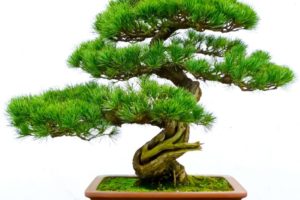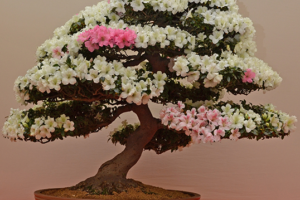Shaping a Maple Bonsai
Shaping a maple bonsai is a process that requires a great deal of skill, patience, and attention to detail. Maple trees are popular choices for bonsai enthusiasts due to their vibrant color and delicate leaves. However, shaping a maple bonsai can be challenging, as it requires a deep understanding of the tree and its needs. In this blog post, we will take a closer look at the process of shaping a maple bonsai and what you need to know in order to succeed.
The first step in shaping a maple bonsai is to select the right tree. This is a crucial step, as it will determine the overall success of your bonsai. You should select a maple tree that has the potential to be shaped into the desired style, with strong and healthy roots, a good trunk and branches, and a balanced canopy. The tree should also be in good health, free from pests and diseases.
The next step is to create the desired shape and style of the maple bonsai. This is done using bonsai wiring, a technique that involves wrapping copper or aluminum wire around the branches and trunk of the bonsai tree in order to manipulate its growth direction. This is a gradual process that requires patience and practice, and it should be done over a period of several weeks or months, to allow the tree to adjust to the new shape.
It’s also important to keep in mind that shaping a maple bonsai tree is a seasonal process. Maple trees are deciduous, meaning that they lose their leaves in the fall, so the best time to shape the tree is during the growing season, typically in the spring or early summer.
Once the desired shape and style have been achieved, it’s important to focus on the overall appearance of the maple bonsai. This includes the tree’s foliage, branches, and trunk. The tree should be pruned and trimmed to create a balanced and symmetrical appearance, and to encourage the growth of new buds and leaves. The tree should also be fertilized and watered regularly to ensure that it is healthy and vibrant.
Another important aspect of shaping a maple bonsai is to pay close attention to the details. This includes the tree’s pot, which should be clean and in good condition, and the presentation of the tree, which should be neat and professional. The tree should also be placed on a display stand that is appropriate for its size and style.
It’s also important to keep in mind that maple bonsai trees require a great deal of care and attention. They should be kept in a location that receives plenty of sunlight and should be protected from strong winds and heavy rain. They also need to be repotted every 2-3 years and should be pruned regularly to maintain the desired shape and style.
In conclusion, shaping a maple bonsai is a process that requires a great deal of skill, patience, and attention to detail. It requires a deep understanding of the tree and its needs, as well as a keen eye for detail. By following the steps outlined in this blog post, you can create a beautiful and vibrant maple bonsai tree that is a true work of art. Remember to select the right tree, create the desired shape and style, focus on the overall appearance, pay attention to the details and keep in mind the seasonal and care needs of the tree to achieve a successful outcome.







Leave a Reply
Your email is safe with us.
You must be logged in to post a comment.